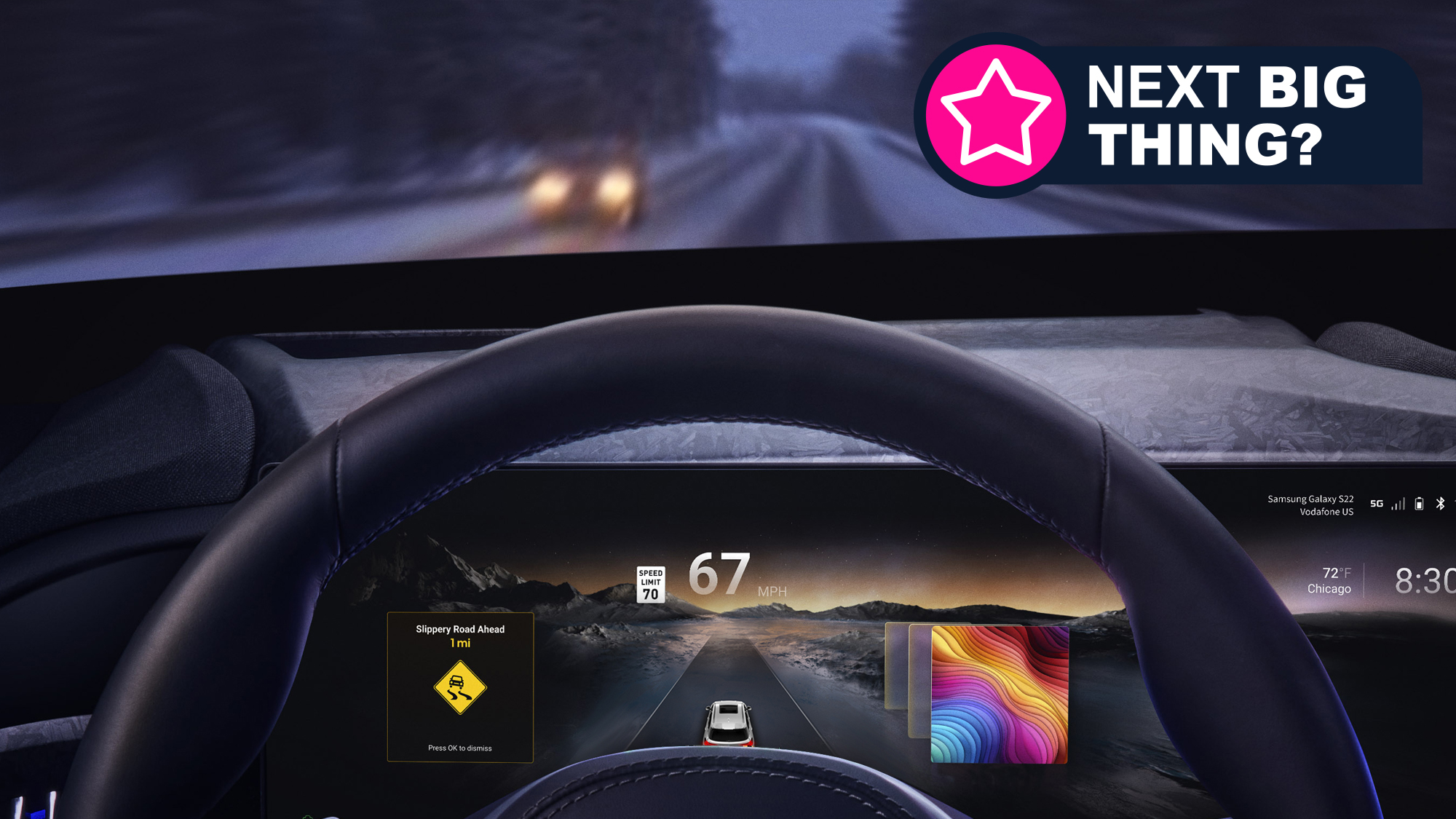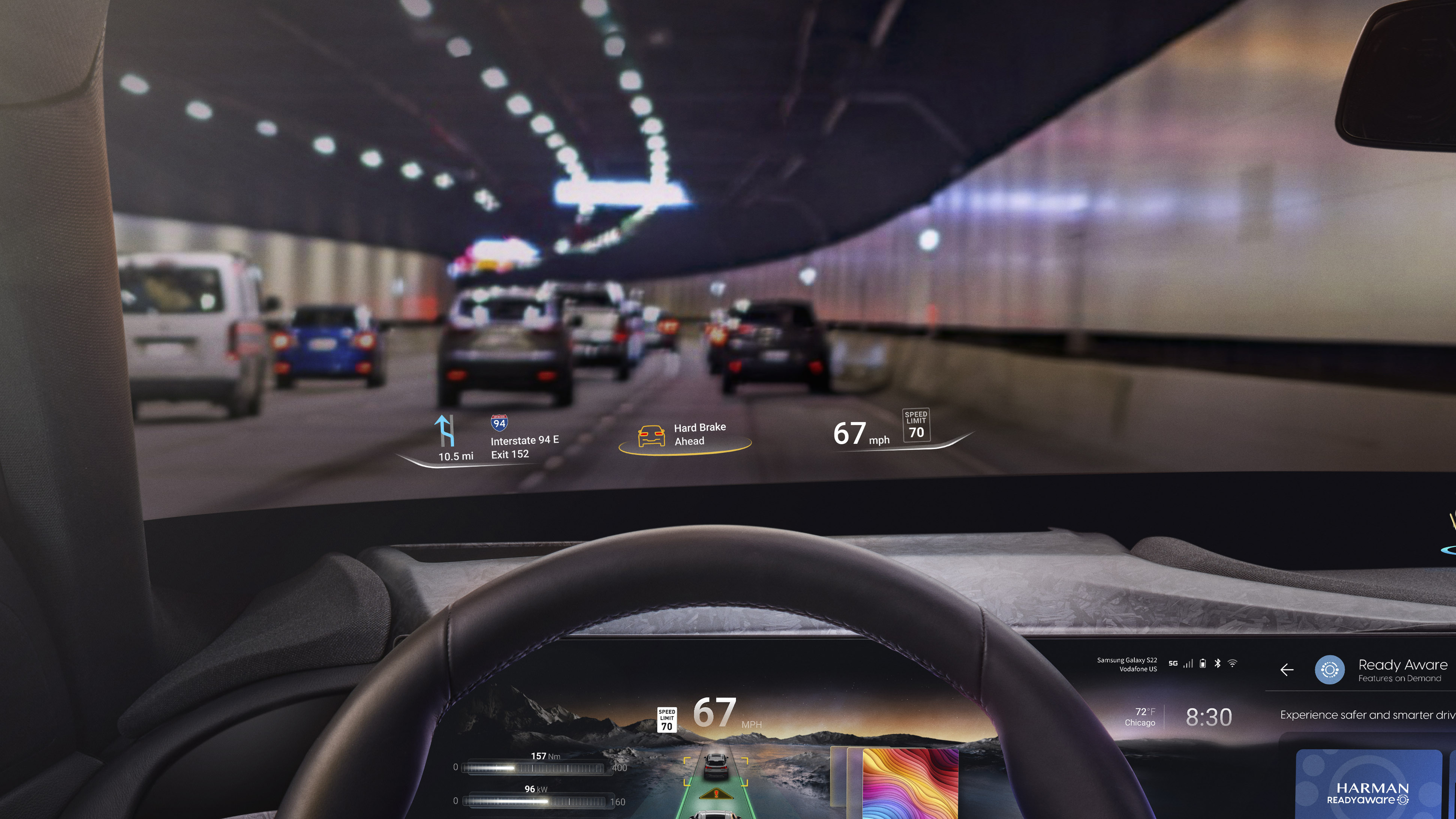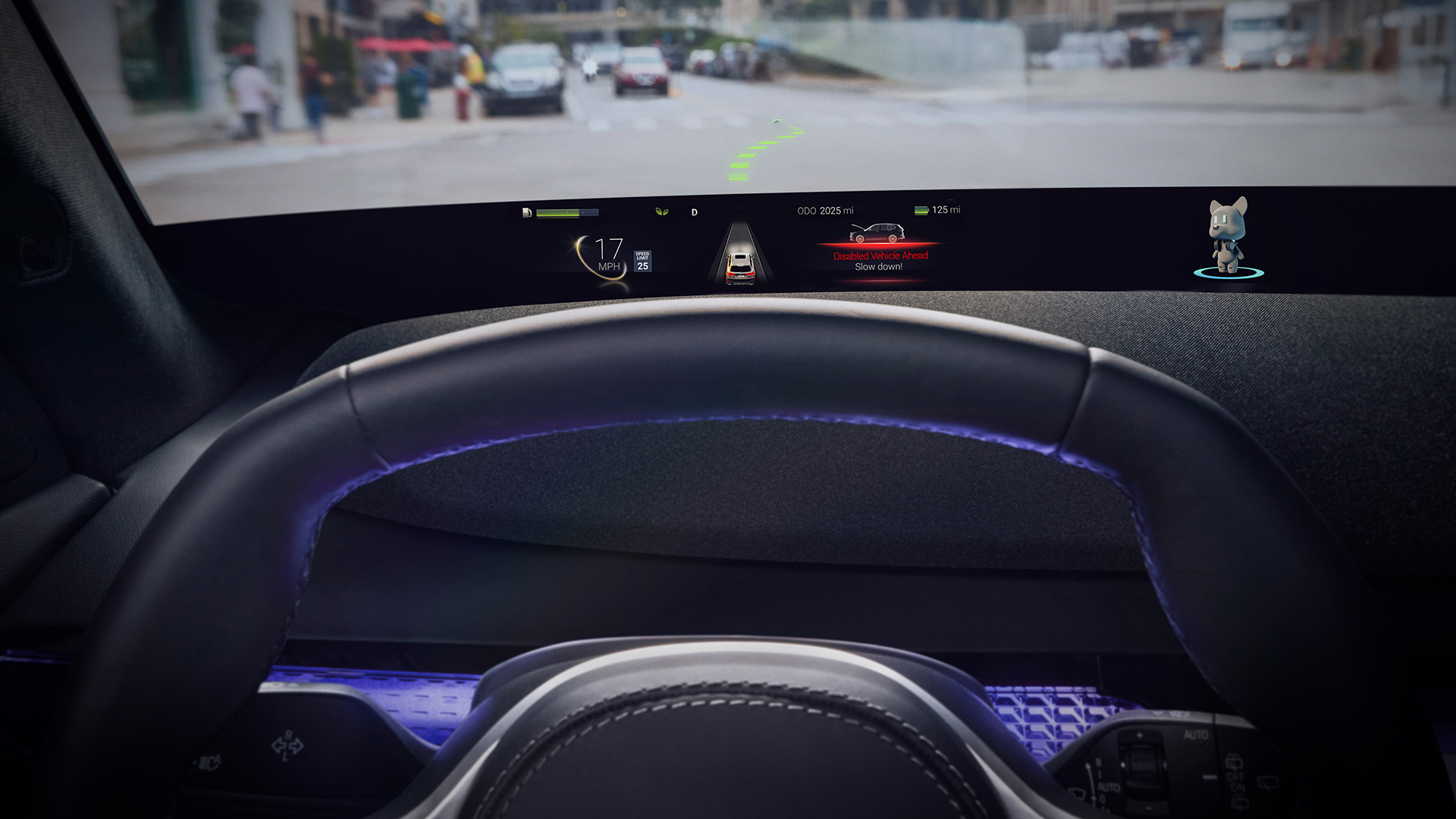Harman’s new in-car tech could give you Waze-like alerts – without the need for human helpers
Is Ready Aware the future of contextual alerts for drivers?

Harman has unveiled details of a new software solution that it hopes will offer “beyond sight” contextual alerts to drivers, without the need for expensive additional hardware or lengthy developmental schedules for manufacturers.
Initially revealed as part of a package of automotive innovations at this year’s Mobile World Congress event in Barcelona, Harman went into further detail at its Harman Explore day in Munich last week, where it demonstrated a number of its vehicle-based solutions.
However, the Ready Aware Software-as-a-Service (SaaS) could well offer the most benefit to future drivers, as it leverages the power of modern vehicle sensor suites, 4G or 5G connectivity and next-generation infotainment systems to alert drivers about hazards they cannot yet see.
The company says that the digital approach ensures motorists receive “precise, relevant, and near real-time contextual insights for improved situational awareness”, drawing data from both connected infrastructure and connected cars from any brand.
According to the company, which is a a subsidiary of Samsung Electronics, the cloud-based analytics engine uses digital twins and machine learning to create a detailed picture of surroundings based on real-time data received from a multitude of sources.
What can it do?

For example, Harman says that it can detect circumstances of hard braking ahead, should the vehicle in question be sending standardized Vehicle Safety Messages to the cloud, and then warn the driver of impending congestion.
This also works for a vehicle reversing ahead, a fast-approaching vehicle from behind, or even a vehicle up ahead that is swerving or behaving erratically.
Sign up for breaking news, reviews, opinion, top tech deals, and more.
Similarly, standardized data from civil infrastructure, such as mobile roadworks or faulty traffic lights, can be logged by the system and distributed to any vehicle running Ready Aware in the vicinity.
Harman splits these events up into event-based and feed-based alerts, which include things like bad weather notifications, objects on the road and upcoming accidents.
An event-based alert could include a stranded or broken down vehicle, emergency electronic brake light activation ahead (traffic slowing quickly) or a sudden change in speed limit.
In order to reduce the number of false or incorrect messages, Harman says its Situational Awareness Engine (SAE) analyses the data it collects and assigns it a ‘confidence score’.
The more validating data it receives, the more confident it is that the event is worthy of a notification. All of this is done in near real-time, according to the company.
An attractive package

Google Maps and Waze users will be familiar with some of these warnings, but the majority of those rely on the human community to log and confirm hazards, which is not only less reliable but can also prove a distraction to those behind the wheel.
Harman says that the driver won’t have to do anything thanks to its software, and it’s just as easy for OEMs and vehicle makers to install the system – the main requirements being an existing sensor suite (cameras, sensors, LiDar etc), the required processing power and a 4G or 5G connection.
What’s more, the company says the software solution can run on both Android and Linux infotainment platforms, with a simple Over-the-Air (OTA) update enough to have most modern connected cars Ready Aware compatible.
We reported recently on how EuroNCAP, Europe’s leading car safety organization, has been incentivizing greater levels of active safety like this, which will make Harman’s solution even more attractive to those OEMs wanting a simple, affordable off-the-shelf solution.
Harman says there are already more than 50 million automobiles on the road today equipped with its connected tech, and millions more with the required hardware to run such a system.
There is currently no timeline on when we will see its technology made available in production vehicles, but Harman says it is ready roll it out now.
The company also announced this week that it is one of the first to open-source a full connected services platform, part of its Eclipse Connected Services Platform (ECSP) project.
It hopes it will encourage greater "interoperability" between different carmakers and help speed up the development and deployment of future connected cars.
You might also like
- Forget foldable phones – LG's 'stretchable' in-car display can grow physical buttons when you need them, and I can't stop watching it
- Mercedes' new steer-by-wire tech is the next big EV trend – and I'll begrudgingly accept that it's the future
- Slate Auto's affordable electric pick-up truck is everything the Tesla Cybertruck isn't – and could be a big hit

Leon has been navigating a world where automotive and tech collide for almost 20 years, reporting on everything from in-car entertainment to robotised manufacturing plants. Currently, EVs are the focus of his attentions, but give it a few years and it will be electric vertical take-off and landing craft. Outside of work hours, he can be found tinkering with distinctly analogue motorcycles, because electric motors are no replacement for an old Honda inline four.
You must confirm your public display name before commenting
Please logout and then login again, you will then be prompted to enter your display name.